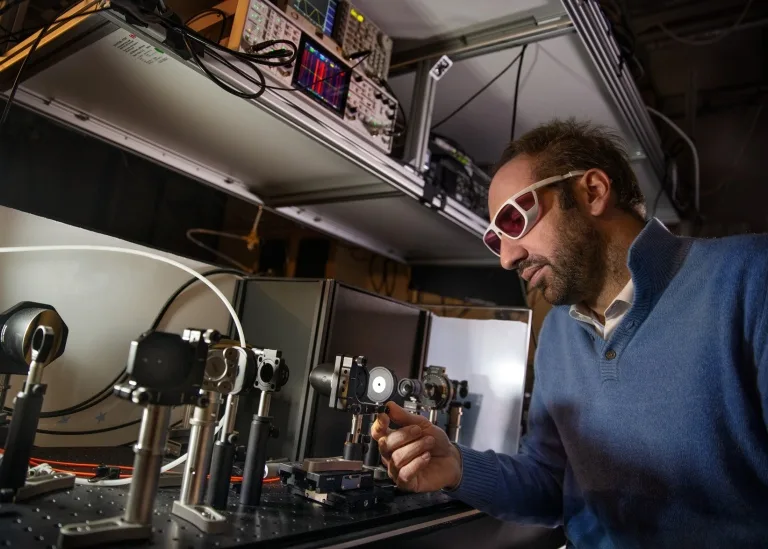Researchers at Stockholm University, the Nordic Institute for Theoretical Physics, and the Ca’ Foscari University of Venice have demonstrated how laser light can induce quantum behavior at room temperature, making non-magnetic materials magnetic. This breakthrough could lead to faster, more energy-efficient computers, data storage, and information transfer. The team, led by Stefano Bonetti, used a new light source with a “corkscrew” shape to move atoms and electrons in a circular motion, generating currents that made the material magnetic. The method is based on the theory of “dynamic multiferroicity,” confirmed in practice for the first time.
Quantum Behavior Induced at Room Temperature
Researchers from Stockholm University, the Nordic Institute for Theoretical Physics, and the Ca’ Foscari University of Venice have made a significant breakthrough in quantum technology. They have demonstrated, for the first time, how laser light can induce quantum behavior at room temperature, making non-magnetic materials magnetic. This development is expected to accelerate the advancement of quantum technology, potentially revolutionizing several societal sectors and opening up new technological possibilities in communication and energy.
The laser light used in this experiment is circularly polarized, resembling a “corkscrew”. When this type of light enters a material, it transfers its circular polarization to the atoms within, causing them to rotate and generate atomic currents. If the frequency of the light matches the frequency of vibration of the atoms, the effect is amplified, resulting in a relatively large magnetism.
Quantum States and Their Potential
Quantum particles possess peculiar and bizarre properties that deviate entirely from the laws of classical physics. These properties can make materials magnetic or superconducting. By increasing our understanding of how and why these quantum states arise, researchers aim to control and manipulate materials to obtain quantum mechanical properties.
Until now, researchers have only been able to induce quantum behaviors, such as magnetism and superconductivity, at extremely cold temperatures. This limitation has confined the potential of quantum research to laboratory environments. However, the recent breakthrough of inducing quantum behavior at room temperature expands the potential applications of quantum technology.
Laser Light Induces Magnetism
The research team, which includes members from various international institutions, demonstrated how laser light can induce magnetism in a non-magnetic material at room temperature. They subjected the quantum material strontium titanate to short but intense laser beams of a peculiar wavelength and polarization, inducing magnetism.
The innovation in this method lies in the concept of using light to move atoms and electrons in the material in a circular motion, generating currents that make the material as magnetic as a refrigerator magnet. This is the first time such a phenomenon has been induced and observed at room temperature in an experiment.
Broad Applications in Information Technologies
The method is based on the theory of “dynamic multiferroicity,” which predicts that when titanium atoms are “stirred up” with circularly polarized light in an oxide based on titanium and strontium, a magnetic field will be formed. The confirmation of this theory in practice is expected to have broad applications in several information technologies.
The results of the team have already been reproduced in several other labs, and a publication in the same issue of Nature demonstrates that this approach can be used to write, and hence store, magnetic information. This opens up the possibility for ultra-fast magnetic switches that can be used for faster information transfer and considerably better data storage, and for computers that are significantly faster and more energy-efficient.
Funding and Future Research
The research project has been funded by the Knut and Alice Wallenberg Foundation and an ERC Synergy Grant. The successful reproduction of the team’s results in other labs and the potential applications of this breakthrough in information technologies mark the beginning of a new chapter in designing new materials using light. Future research will likely focus on further exploring and refining this method, as well as investigating its potential applications in various fields.
External Link: Click Here For More

